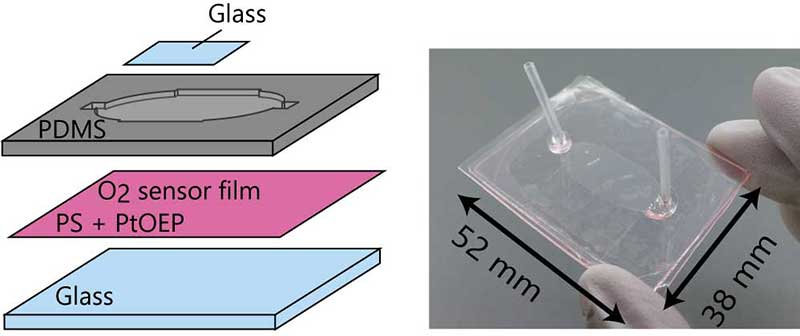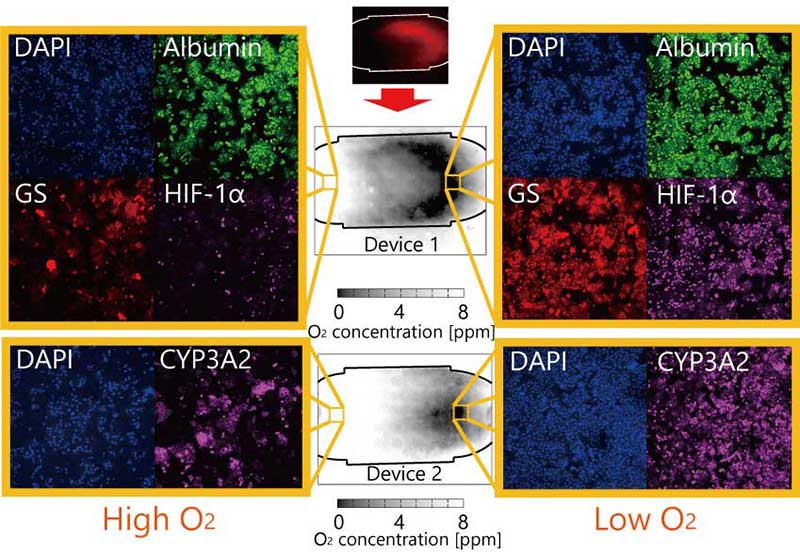Abstract
Since the animal test has many issues, new alternative methods to test new drug candidates in vitro usign extracted or sliced liver are needed in drug screening process. However, there remains a big issue that the methods developed so far cannot recapitulate multiple hepatic functions simultaneously in a good balance as in vivo. It is known that the multifunctional system of liver is created by oxygen gradient. Hence, it is necessary to establish in vivo-like liver environment especially including the oxygen gradient inside a microfluidic device system for solving this big issue.
 Microfluidic device to recapitulate liver zonation in vitro
Microfluidic device to recapitulate liver zonation in vitro
The liver system providing many hepatic functions in vivo is called liver zonation. Our group is developing a microfluidic device which is able to recapitulate liver zonation and analyze the liver function corresponding to the oxygen gradient among hepatocytes cultured in the developed system. We have already developed a hepatocyte culture device to form the oxygen gradient from inlet to outlet using cellular respiration and to visualize the oxygen level inside the device using a sheet-type oxygen sensor made of PtOEP. We succeeded in reproducing several protein expressions, for instance HIF-1α and CYP3A2, which were similar to in vivo. In addition, we succeeded in reproducing in vivo-like phenacetin metabolism in the device. The developed device is also avalable for the position-selective sampling of cells to analyze those cells in more details (for instance, using RT-qPCR).
 Oxgen gradient and protein expressions in the device
Oxgen gradient and protein expressions in the device
Collaboration
- Sakai, Y. Lab, Chemical System Engineering, Uiversity of Tokyo
- Leclerc, E., IIS, University of Tokyo
Sponsor
- JST